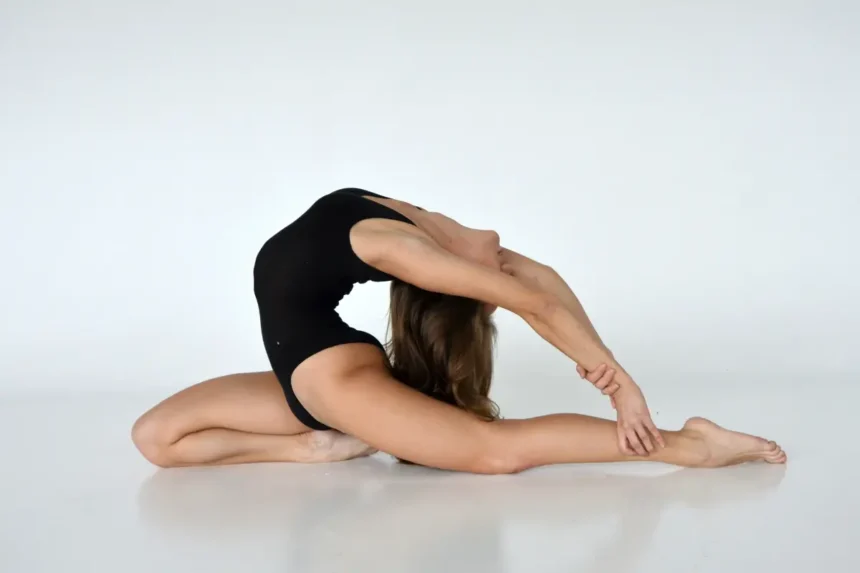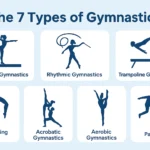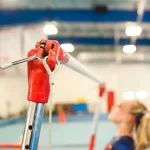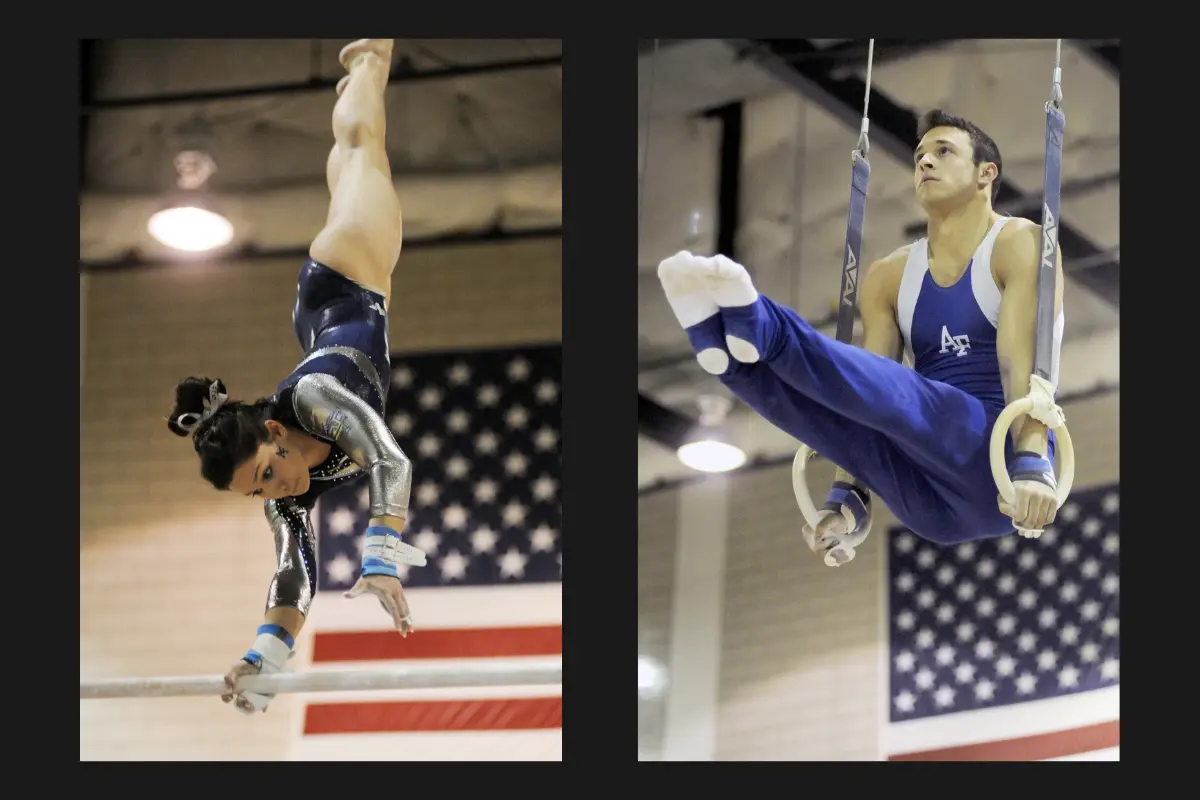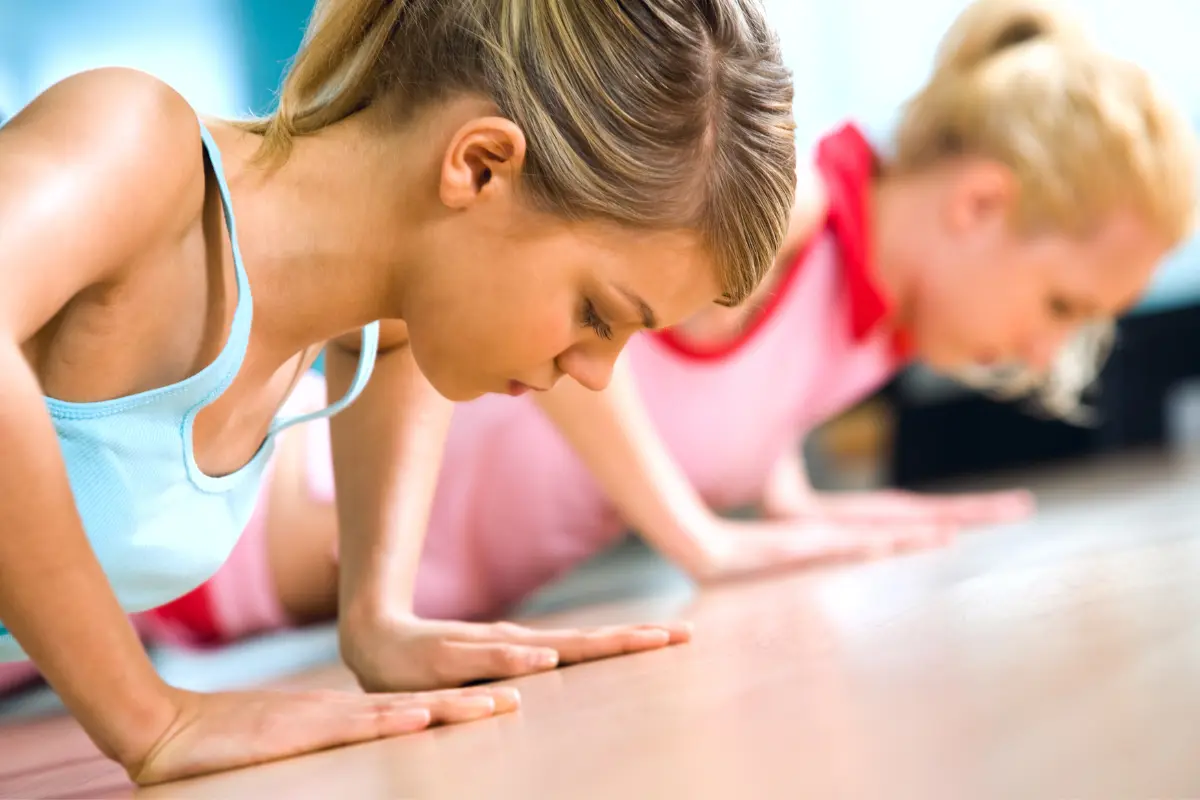If you’ve ever watched women’s gymnastics—especially at the college or elite level—you’ve probably noticed something beyond the flips and tumbling: the dancing.
There’s rhythm, music, expressive movement, sometimes even a little sass or storytelling. It’s not just about sticking landings; it’s about performing. But why is dance part of gymnastics in the first place? And why is it required—specifically for women and not for men?
Let’s take a closer look at…
What Exactly Is “Dance” in Gymnastics?
In women’s gymnastics, the term “dance” mostly applies to the floor exercise and balance beam routines. These are the two events where choreography is not only present—it’s required.
On floor, gymnasts perform to music (no lyrics allowed at the elite level, though college gymnastics allows them). The routine blends acrobatic tumbling passes with dance elements like leaps, turns, jumps, and expressive movements that connect everything together. It’s more than just a breather between flips—it’s part of the score.
On beam, dance is just as important, even though there’s no music. You’ll still see leaps, turns, poses, and expressive transitions, all performed with grace and control on a 4-inch-wide beam. Dance helps connect the big skills and keep the routine fluid, which is critical for scoring.
Why Is It Required?
Short answer? Because the rules say so—but there’s more to it than that.
Women’s artistic gymnastics has always placed a strong emphasis on artistry, especially on floor and beam. According to the FIG Code of Points (that’s the rulebook for international competition), gymnasts must include a certain number of dance elements in their routines. This includes:
- Leaps or jumps (with full split positions)
- Turns (usually done on one foot)
- Choreographed movements that show rhythm, expression, and flow
These aren’t just for show—they’re part of the difficulty and execution score. Missing required dance elements or performing them poorly can lead to deductions. So yes, even the most powerful tumblers still need to be able to leap, turn, and move expressively.
You might be thinking—why do women include dance in their routines, but men don’t?
It’s a good question, and it mostly comes down to tradition.
A long time ago, when gymnastics was first becoming a sport, people believed that women’s routines should focus on grace, beauty, and elegance—things that were seen as “feminine.” So dance and music were added to their events to highlight those qualities.
Men’s gymnastics, on the other hand, was designed to show off strength, power, and big skills, so their routines don’t include dance or music. Over time, these different styles just stuck—and that’s why women and men still have different rules today.
Why Dance Matters in Women’s Gymnastics
Here’s the thing—gymnasts aren’t just athletes. They’re performers.
They don’t just tumble across the floor like machines. They tell stories. They entertain. They move people. That’s the magic of dance in women’s gymnastics.
Dance Brings the Routine to Life
In a sport filled with powerful flips and gravity-defying skills, the dance elements are where gymnasts show who they are. The choreography between tumbling passes isn’t just “filler”—it’s where the personality comes through. Through their movements, facial expressions, musical choices, and even attitude, gymnasts can turn a technical routine into an unforgettable performance.
This is especially true in NCAA gymnastics, where the floor is a stage.
NCAA Gymnastics: The Crowd Goes Wild
In college gymnastics, dance is often the star of the show. Gymnasts choose their own music, and routines are choreographed to fit their personalities. You’ll see sass, joy, swagger, attitude—even a bit of humor. The best routines get the crowd clapping, teammates dancing on the sidelines, and social media buzzing.
Here are a few standout examples:
- Katelyn Ohashi (UCLA) – Her 2019 “Michael Jackson” routine is legendary. She combined jaw-dropping tumbling with hip-hop-style choreography, cheeky facial expressions, and flawless musicality. It wasn’t just a routine—it was a show. The video has over 250 million views for a reason.
- Nia Dennis (UCLA) – Her “Black excellence” routine to music by Beyoncé, Kendrick Lamar, and Missy Elliott was powerful and proud. Every movement—from her salute to her swag—told a story of strength, culture, and confidence. It went viral not just because of the flips, but because of what the dance meant.
- Jordan Chiles (UCLA) – Known for her energy and charisma, Jordan brings elite-level skills with a college-style performance flair. Her routines often include pop music, sharp choreography, and playful expression—she makes it look fun and fierce at the same time.
These performances aren’t just fun to watch—they’re judged, too. In NCAA, execution and artistry are scored together. A gymnast who connects with the music and performs with confidence can earn higher marks than someone who just “goes through the motions,” even with similar tumbling.
Elite Gymnastics: Subtle, but Still Powerful
At the elite level, like the Olympics or World Championships, dance is more subdued—but no less important. Choreography must be artistic, connected, and meaningful. The routines may feel more classical or serious, but the dance is still very much part of the package.
- Simone Biles doesn’t just dominate with difficulty—she owns the floor with clean, intentional movement. Her choreography is sharp and efficient, often with musical accents that match her landings or transitions. Even in a minimalist routine, her presence and timing make it feel powerful.
- Melanie de Jesus dos Santos (France) is known for elegant, expressive floor work. Her style is more balletic, but no less athletic. She flows between turns and leaps with a softness that makes even the hardest skills look effortless.
- Lauren Hernandez (USA, 2016) charmed the world with her expressive beam and floor routines. Her dance was playful, polished, and packed with personality. She winked at the judges, used musical cues creatively, and had a style that made people smile.
While elite routines have to meet strict technical requirements, the presentation still matters. Judges look for:
- Rhythm and flow
- Originality and creativity
- Confidence and expression
- Connection between the gymnast and the music
Even small things—like eye contact, body posture, and how a gymnast walks into a skill—can impact the overall impression.
But What If the Gymnast Isn’t a Dancer?
Not every gymnast loves dance. In fact, for some, it’s the hardest part of the routine.
That’s why many gymnasts train with choreographers, who help them build routines that suit their style and comfort level. Some routines are bold and sassy. Others are elegant and classical. The best choreographers know how to highlight a gymnast’s strengths and help them shine—even if they’re not natural dancers.
And yes, judges can tell when a gymnast is just “getting through” the choreography versus truly performing it. That’s why dance isn’t just required—it’s rewarded when done well.
In Summary
Dance in women’s gymnastics isn’t just tradition or performance—and it’s not optional. Dance elements are a required and important part of every routine. They help connect powerful skills with grace and style, turning tough tricks into something smooth and beautiful.
These elements show control, elegance, and creativity, and they’re part of what makes women’s gymnastics so special to watch.
